AWS Networking Fundamentals
Core Networking Services
VPC Overview
A Virtual Private Cloud (VPC) is your isolated network segment within AWS. It lets you launch AWS resources in a logically separated environment, complete with custom IP ranges, subnets, routing rules, and security controls—just like running your own data center without the physical infrastructure.
What Is a VPC?
A VPC is an isolated virtual network in AWS where you can launch resources such as EC2 instances. Within each VPC, you configure:
- IP address ranges using CIDR blocks
- Subnets for grouping resources across Availability Zones
- Route tables to control traffic flow
- Security Groups (instance-level, stateful firewalls)
- Network ACLs (subnet-level, stateless firewalls)
- Gateways for Internet, VPC-to-VPC, or on-premises connectivity
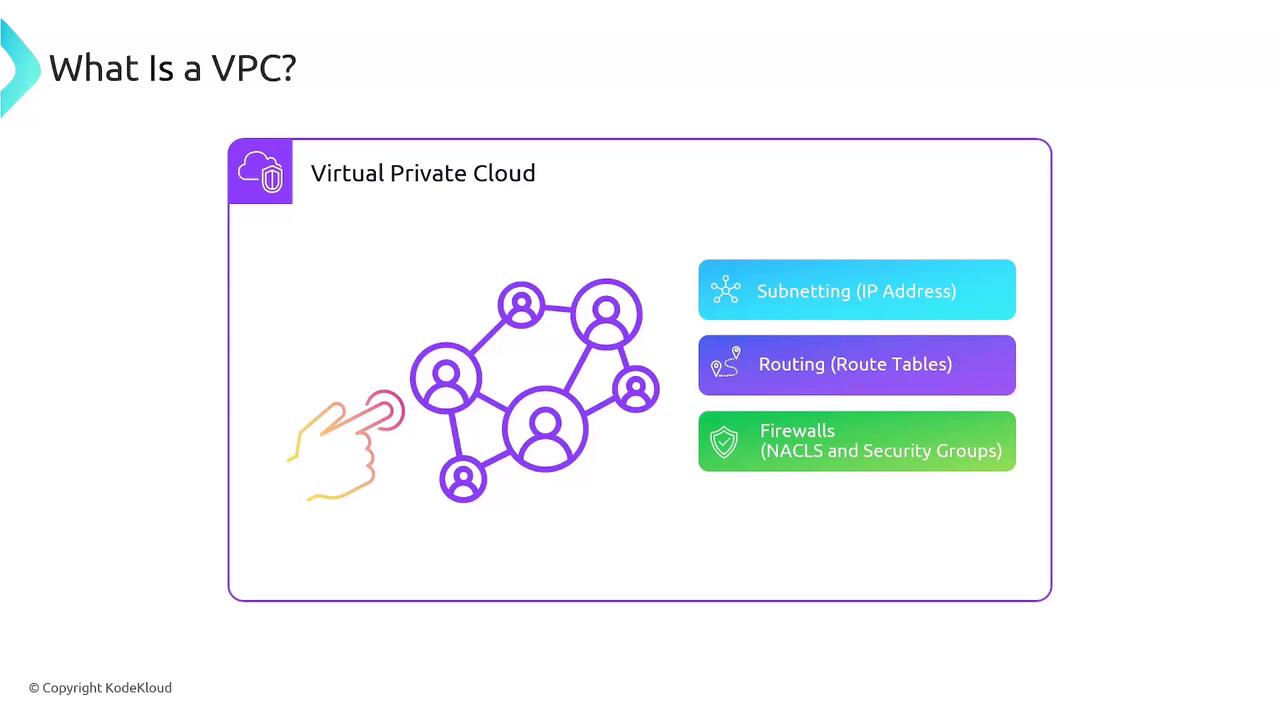
Regional Isolation
Each VPC exists entirely within a single AWS Region and cannot span multiple regions. By default, resources in VPC A (us-east-1) are isolated from resources in VPC B (us-east-2) unless you establish explicit connectivity.
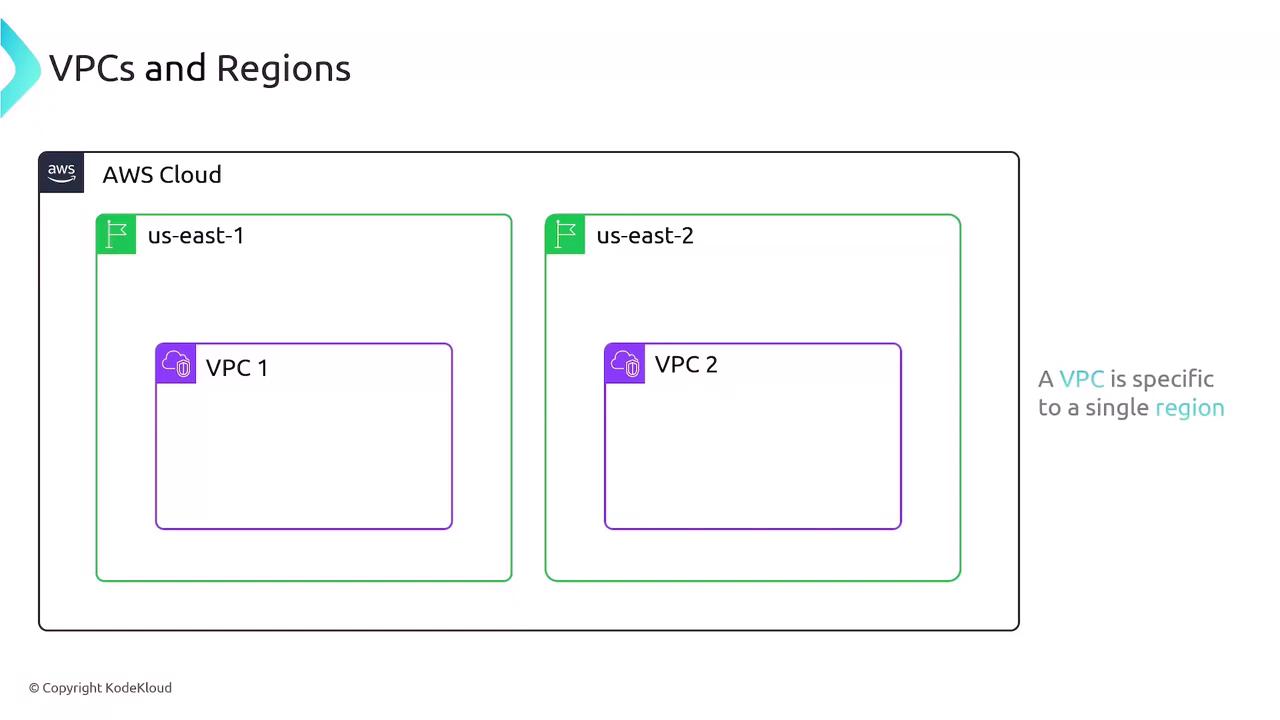
VPC as a Network Boundary
Out of the box, VPCs are completely isolated:
- No Internet access until you attach an Internet Gateway
- No communication between VPCs until you configure VPC Peering or a Transit Gateway
- No on-premises connectivity until you set up VPN or AWS Direct Connect
Note
You can attach an Internet Gateway to multiple public subnets, but each VPC supports only one Internet Gateway.
IP Addressing: CIDR Blocks
When creating a VPC, assign a primary IPv4 CIDR block between /16 and /28:
- Example:
192.168.0.0/16(65,536 addresses) - Add secondary IPv4 CIDR blocks as needed
- Enable IPv6 using a
/56block (up to five per VPC, adjustable on request)
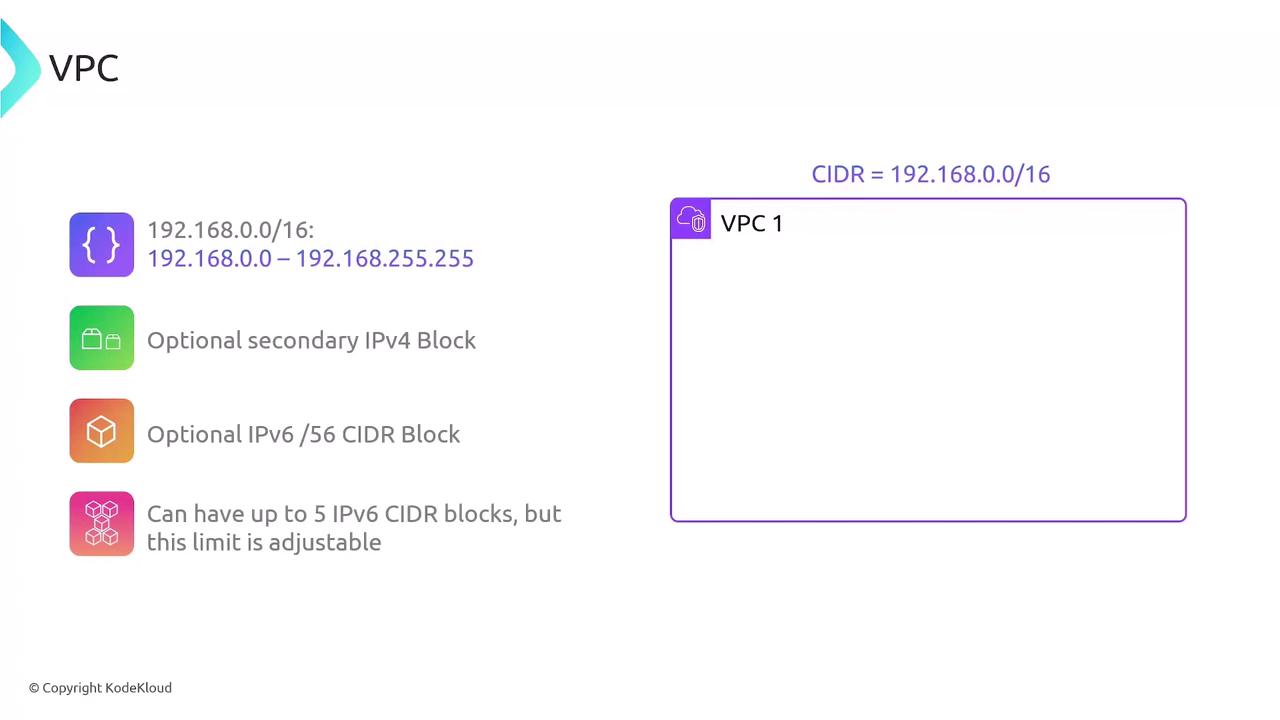
Warning
Plan your CIDR ranges carefully to avoid overlap with other VPCs or on-premises networks.
Default vs. Custom VPCs
AWS offers two VPC types:
| Feature | Default VPC | Custom VPC |
|---|---|---|
| Creation | Automatically created in every region | Manually created by you |
| CIDR block | 172.31.0.0/16 | You choose (/16–/28 for IPv4) |
| Subnets | One public /20 subnet per AZ | Public/private subnets per your design |
| Internet Gateway | Attached with a 0.0.0.0/0 route by default | Requires manual attachment & routing |
| Security Controls | Default SG and NACL allow all traffic by default | Configure SGs & NACLs from scratch |
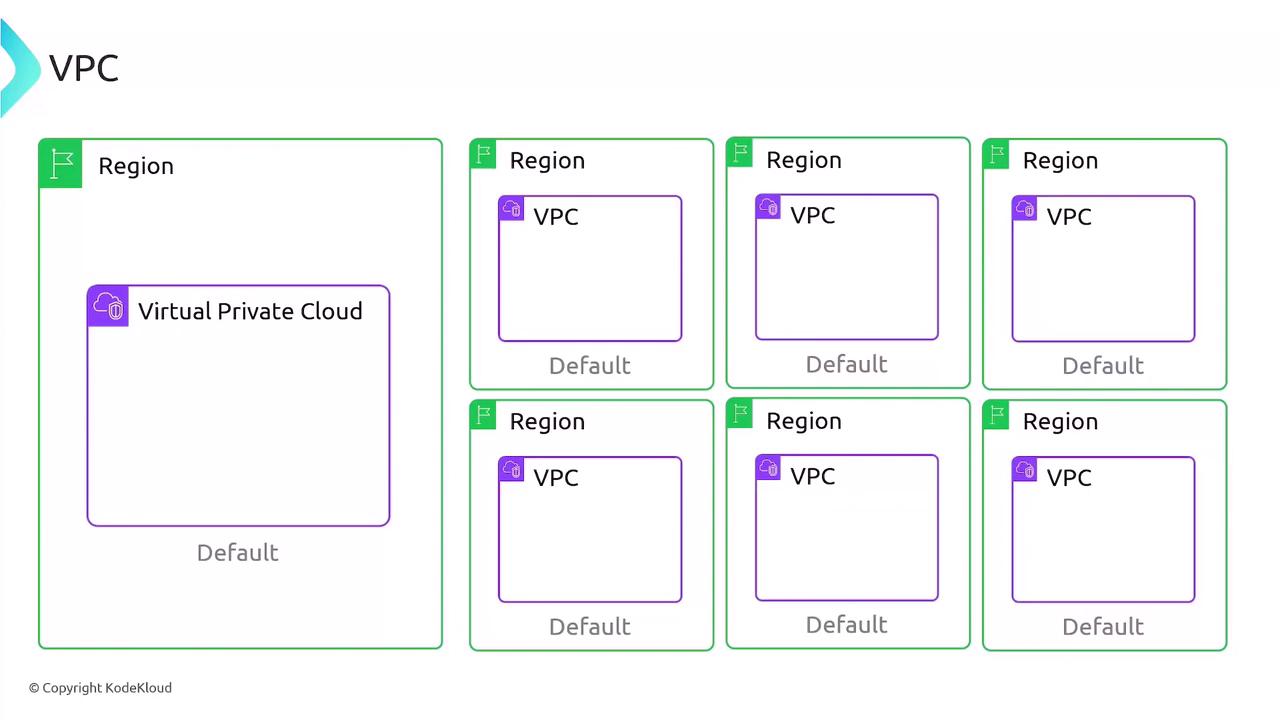
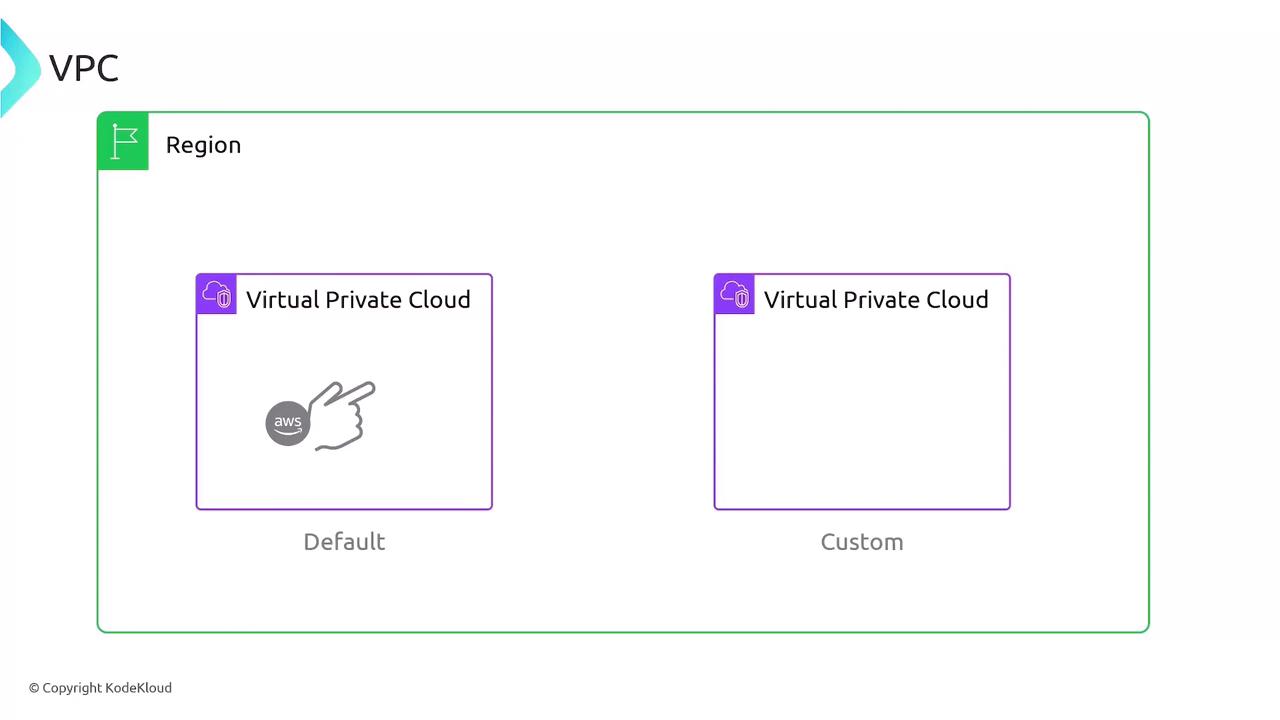
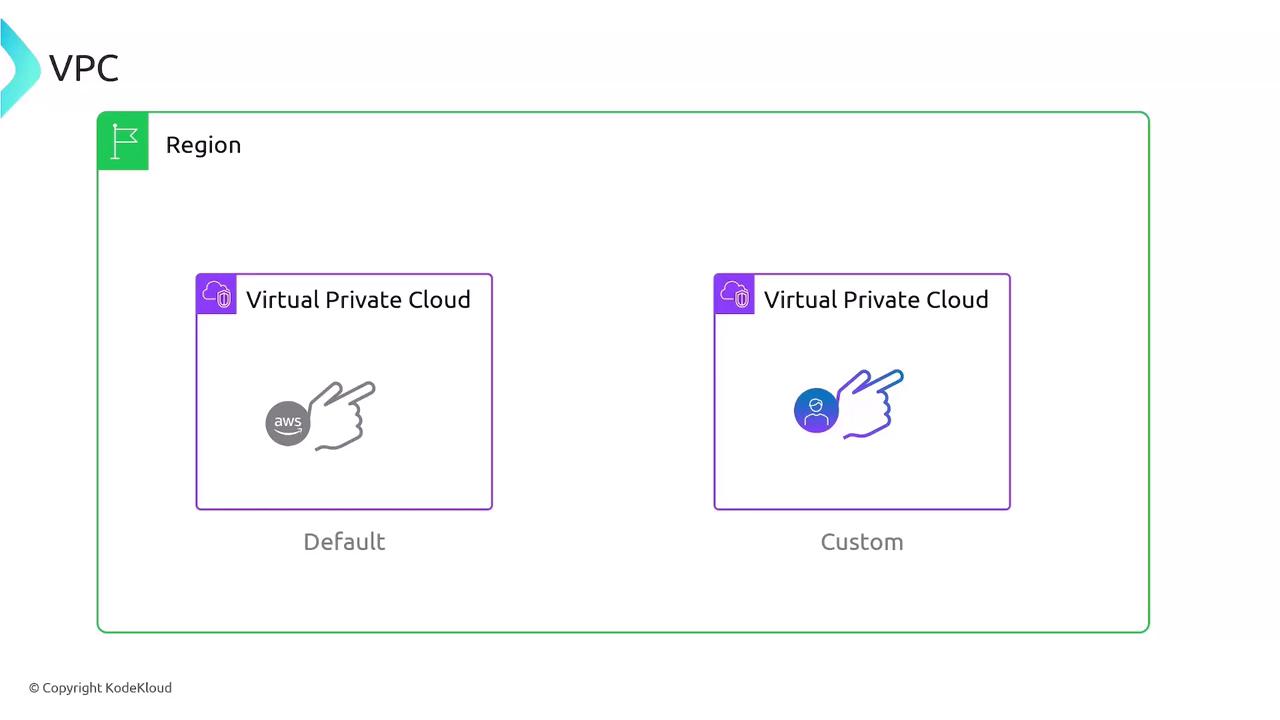
Default VPC Configuration
Every AWS Region includes one Default VPC with these built-in settings:
- CIDR block:
172.31.0.0/16(65,536 IPs) - Subnets: One default
/20subnet per AZ- e.g.,
172.31.16.0/20,172.31.32.0/20, etc.
- e.g.,
- Internet Gateway: Attached by default with a
0.0.0.0/0route - Security Group: Default SG allowing all outbound traffic
- Network ACL: Default NACL allowing all inbound and outbound traffic
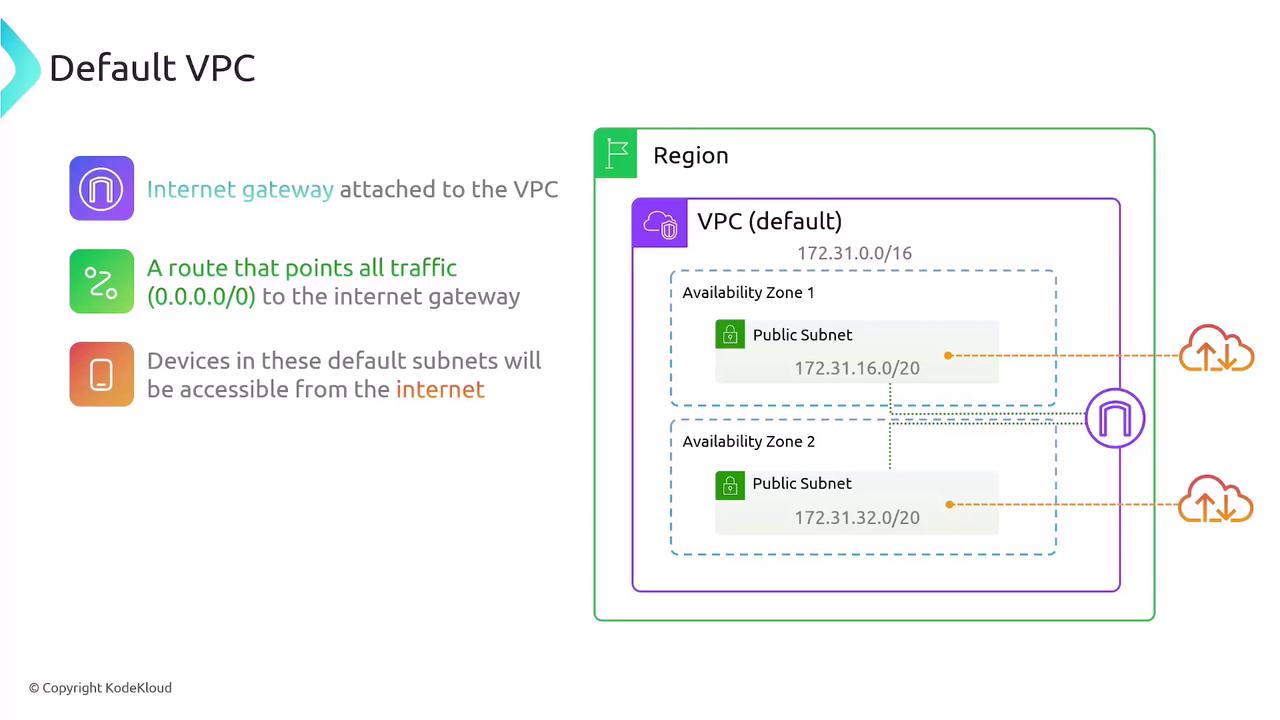
Summary
- VPCs isolate your AWS resources within a single Region.
- Define IP ranges with CIDR blocks (IPv4
/16–/28, optional IPv6/56). - Default VPCs are pre-configured for fast deployment; Custom VPCs give you full control.
- Default VPCs use
172.31.0.0/16, provide one/20subnet per AZ, and include Internet access by default. - Security Groups and NACLs enforce instance- and subnet-level traffic rules, respectively.
Links and References
Watch Video
Watch video content